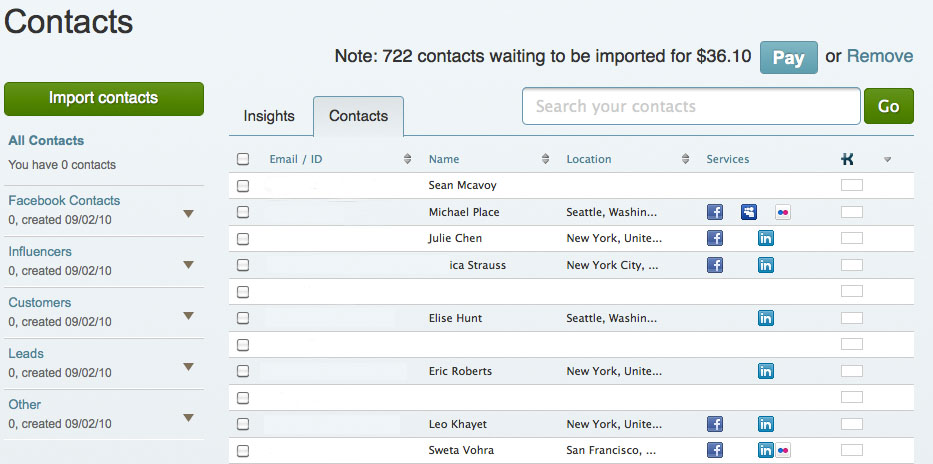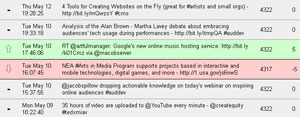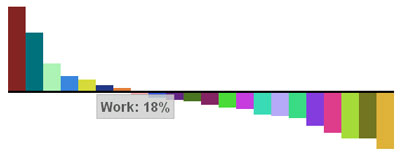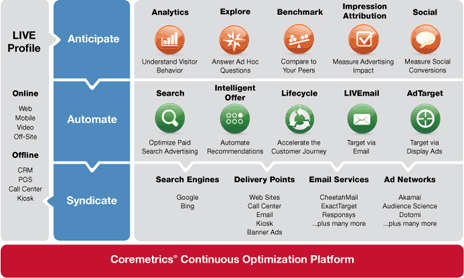In 2019 the Arts Management and Technology Lab researched a wide breadth of content, from product reviews of image editing software to industry analysis of music streaming. As the year draws to a close, looking back through Google analytics offers a perspective on what the arts management field was particularly keen to learn over the year. Read on to see if the top topics align with any of your particular interests or passions.
Artists Mold the Future of Ceramics With 3-D Printing
Artificial Intelligence In Museums: Chatbots, Social Analytics, and More!
Artificial Intelligence is opening up a new world of possibilities for arts organizations in terms of programmatic offerings, guest services, and management. A recent convening of the American Alliance of Museums, hosted by the Perez Art Museum Miami, and sponsored by The Knight Foundation and Alley Interactive, brought together museum professionals, technologists, and futurists to discuss how AI is, and can be used in museums.
Building Audiences Part II: The Results
Building Audiences Part I: An Experiment in DIY Augmented Reality
The Future of CRMs: Five Up and Coming Features That Could Benefit Your Arts Organization
Google AdWords: What is it and How Does it Work?
10 Arts Marketing Tips to Fuel Change In Your Nonprofit
21st Century Lessons from Capacity Interactive's Digital Marketing Bootcamp
Guest Correspondent Randolph Jones of the Oregon Shakespeare Festival attended Capacity Interactive's 2015 Digital Marketing and left elated and hopeful. The conference focused on the intersection of technology, marketing, and the arts and featured presenters from across the sector. To learn more about what these presenters had to say, and to see what insight Jones draws himself, read the full article here.
The Rise of Online Philanthropic Contests
 Over the past couple of years or so there has been a steady rise in the phenomena of competitive voting contests for not for profit organizations to receive grants for projects or operations. These contests are run by large corporations as well as not for profit groups. Examples of corporate contests take different shapes such as Pepsi's with the Pepsi Refresh Project which gives grants ranging from $5k to $50k based on competitive community voting toChase Community Giving which touts donations over $600 million dollars through Facebook contests. The National Trust for Historic Preservation has similarly put contests into place by granting to various historic restoration projects based on the number of votes they receive online.
Over the past couple of years or so there has been a steady rise in the phenomena of competitive voting contests for not for profit organizations to receive grants for projects or operations. These contests are run by large corporations as well as not for profit groups. Examples of corporate contests take different shapes such as Pepsi's with the Pepsi Refresh Project which gives grants ranging from $5k to $50k based on competitive community voting toChase Community Giving which touts donations over $600 million dollars through Facebook contests. The National Trust for Historic Preservation has similarly put contests into place by granting to various historic restoration projects based on the number of votes they receive online.
Whether these contests sit well with critic's ethical concerns or not, the volume of web traffic generated for the recipients, the donor organizations, and the organizations who compete but do not win is remarkable. According to Pepsi, the most recent contest in the fall of 2011 garnered more than half a million distinct registrations with over 3.5 million votes counted on the Pepsi site alone. If you aggregate this number with all of the site visits, social network hits, and emails then you have a truly noteworthy phenomena.
Why are people so invigorated by these contests? There are less time intensive ways to earn money in aggregate. One can point to the idea that the contest is a game and the competition itself is what people are engaging in more than the philanthropic cause. It could also be argued that the community effort of building a team to go online and vote for the cause for multiple days has an intrinsic value as well and that by the simple act of building this team you are building and drawing constituents deeper into the arts community.
As these online contest continue even more organizations are starting to do them. The Humane Society recently used a online photo contest to raise hundreds of thousands of dollars, the Case Foundation has been running a voter based contest for years, and American Express has also run contests in the past.
The following are some tips that have been gleaned from articles and criticism of various contests mentioned previously:
1) Make sure that the contest aligns with your mission. By diverting resources for a potential pie in the sky pot of money you can detract from your organization's true work.
2) Ask what your organization can gain from competing for these pots of money? Set forward goals of community building and identify volunteers to assist with these aims.
3) If you are going to market this to your patrons identify your budget for staff time and delegate a reasonably proportional amount of money to pursue getting the word out.
4) Don't start mid-steam. Almost all winners of these contests have strong starts and once you are behind in the voting it is hard to keep up. If you see a contest in progress that you would have liked to take part in simply put it on your calendar for an effort next year as your opportunity may all ready have passed.
13 Social Media Infographics Every Marketer Needs to See
 Happy Friday! What’s everyone doing this weekend? Perhaps you’re saddling up to head to Louisville for the National Arts Marketing Project Conference. The conference starts tomorrow and goes through next Tuesday the 15th – in which case, enjoy the conference! If you can’t make it to Kentucky this weekend, a lot of the conference will be online. Three sessions will be streaming live and archived as webcasts if you miss them. The conference will also be accessible via twitter with hashtag “#nampc”.
The National Arts Marketing Project (NAMP) offers resources year round on their website to help your arts organization be better marketers. One of these is their newest ebook, 13 Social Media Infographics Every Marketer Needs to See.
Happy Friday! What’s everyone doing this weekend? Perhaps you’re saddling up to head to Louisville for the National Arts Marketing Project Conference. The conference starts tomorrow and goes through next Tuesday the 15th – in which case, enjoy the conference! If you can’t make it to Kentucky this weekend, a lot of the conference will be online. Three sessions will be streaming live and archived as webcasts if you miss them. The conference will also be accessible via twitter with hashtag “#nampc”.
The National Arts Marketing Project (NAMP) offers resources year round on their website to help your arts organization be better marketers. One of these is their newest ebook, 13 Social Media Infographics Every Marketer Needs to See.
The first in a series of free publications, 13 Social Media Infographics Every Marketer Needs to See is an accessible and enlightening tool for those interested in social media marketing. The publication covers the history of marketing channels, basic tips for social media usage, and then moves on to more complex topics like the demographics for each social media website. If you're looking for a way to make sense of all the social media out there, this is a great starting point.
Technology in the Arts also has a lot of great social media resources, including how to analyze your success, tap into that prized demographic, and important current trends. How is your organization using social media to be better marketers?
Google+
 Google+, the search engine giant’s new social networking site with 20 million users, has been getting a lot of press lately. There’s already some good advice out there for art nonprofits from the usual suspects (Devon Smith, Heather Mansfield). And artists are already exploring this new way of sharing their music and visual pieces. With technology this new, there is always a lot of experimentation by the early adopters, speculation by the commentators, and caution from the silent majority. But even at this early point in time, when the fate of Google+ is up in the air, there is one thing that I am certain of: that is that Google + represents a revolution in the integration of digital activity and the way we interact with the world around us. In this article, we’ll talk about what sets Google + apart, how it is integrated with other Google products, and what implications it holds for business in general and the arts in particular.
Google+, the search engine giant’s new social networking site with 20 million users, has been getting a lot of press lately. There’s already some good advice out there for art nonprofits from the usual suspects (Devon Smith, Heather Mansfield). And artists are already exploring this new way of sharing their music and visual pieces. With technology this new, there is always a lot of experimentation by the early adopters, speculation by the commentators, and caution from the silent majority. But even at this early point in time, when the fate of Google+ is up in the air, there is one thing that I am certain of: that is that Google + represents a revolution in the integration of digital activity and the way we interact with the world around us. In this article, we’ll talk about what sets Google + apart, how it is integrated with other Google products, and what implications it holds for business in general and the arts in particular.
What is Google+?
Check out the Google+ intro video if you haven’t already:
There’s a lot of chatter in the blogosphere right now around the idea that Google+ is the ultimate content-sharing platform. The reasons given for this range from enhanced privacy controls making people more comfortable with sharing to the Sparks feature which allows users to find and share content without leaving the platform.
- Circles
One of the biggest things separating Google+ from the rest of the social media pack is its Circles. Instead of all of your contacts either being a friend/follower or not being one, they can be put into different Circles- friends, family, colleagues, etc. Then- and this is the kicker- you can choose who will view which posts. No more work colleagues or family members seeing your expletive-filled posts or pictures from that party.
Sure, Facebook has groups. But in a Facebook group, users choose to join the group--on Google+, you choose the names of your circles and assign who is in them. In Facebook groups, you can post on the group’s wall (which involves first going to the group page), but anyone who visits the page can see what you posted. With Google+, you can choose to share content only with certain circles, adding an extra layer of privacy.
- Enhanced Privacy Controls
Chris Brogan covers this pretty well in this short video. Privacy controls are more transparent and easy to find compared to Facebook.
- Sparks
Google is still primarily a search engine, so it’s no coincidence that they have an integrated search feature in the network. “Sparks” allows you to enter a topic you’re interested in (say, nonprofits), and every time you login, you can click that word to find many articles on the topic that you can then share with as many or as few Circles as you like.
- +1 and Search Engine Optimization integration
 Even if you haven’t made a Google+ account yet, you’ve probably seen the little “+1” icons around the Web. It’s Google’s version of a “like” button. Unlike Facebook’s button, whose data Google doesn’t have access to, a +1 actually impacts search rankings. So, the more +1s a website, article, or video has, the higher it appears in searches, and the more likely people will find it and share it, etc.
Even if you haven’t made a Google+ account yet, you’ve probably seen the little “+1” icons around the Web. It’s Google’s version of a “like” button. Unlike Facebook’s button, whose data Google doesn’t have access to, a +1 actually impacts search rankings. So, the more +1s a website, article, or video has, the higher it appears in searches, and the more likely people will find it and share it, etc.
If you want to learn more about the nuts and bolts, check out Mashable’s guide to G+.
While all these features may pave the way for Google+ to become the content capital of the interwebs, right now, companies, organizations and brands can’t directly participate in this content-sharing utopia.
Currently, the only way for brands to get their content onto G+ is through “real people’s” accounts- employees, constituents, secret admirers, etc. This makes it even more important that your organization has something interesting to say and compelling to share.
Integration
Imagine a world where the offers you receive are based on data not only from your activities, but your friends’ activities . . . where place-based businesses target customers not only by email and postal mail within certain zip codes, but by what street you are walking down, or which restaurant your friends have gathered at . . . This world, where social networking merges with mobile-based services and retail, is closer than ever to being a reality with Google+.
Already, Google Offers has been launched in New York and San Francisco, beaming coupons to customers based on their location and preferences. According to Stephanie Tilenius, Google’s VP of Commerce, Google Offers and Google Wallet (the company’s payment system) will be integrated into G+ as well as other Google properties such as Maps.
Edd Dumbill at O’Reilly Radar is calling this integration of social networks with other web-based applications a “social backbone” to our entire web experience, as opposed to the “walled garden” of existing social networks.
. . . social features will become pervasive, and fundamental to our interaction with networked services. Collaboration from within applications will be as natural to us as searching for answers on the web it today . . . Search removed the need to remember domain names and URLs . . . . The social backbone will relieve our need to manage email addresses and save us laborious ‘friending’ and permission granting activity . . .
All this integration, says Dumbill, will help computers better serve users.
Where does this leave business?
So the world may be changing. How should you prepare for that? Below are some tips from some smart guys at Social Media Explorer.
Jason Falls “Stay the course with what you’re doing. Wait for the brand-permissions and guidelines to come from Google on the Plus platform. Experiment with it for yourself to know how it works and how non-linear you have to be thinking to optimize the use of Circles.”
Mark Ivey Five questions to ask for starters, and to make sure you’re positioned for the G+ world:
- Are you in the game? Do you have a presence across paid (search, broadcast, etc), earned (events) and owned (Facebook, Twitter, blogs, and now G+) media? These are your marketing beachheads, and you’ll need to work across the board to make sure you’re connecting with customers with your messages.
- Do you have a clear content marketing strategy? If so, you’re already using listening tools and engaging in related conversations. Adjust your strategy for G+-and stick to it. If not, better get one in order fast-I just met with two companies last week, neither had a content strategy, both are scrambling in catch-up mode.
- Is your content relevant? If you’re unclear on the role and importance of relevant content, read Michael Brito’s nice analysis piece on SME. Conduct a content audit, compare it to industry conversations, and judge for yourself. Is your content hitting the target? Are you involved and influencing industry conversations? What is your share of voice around key topics?
- Do you have a content engine and systematic publishing process? Then you should have apublishing model and be systematically chunking out content, carefully targeted to your key audiences. Run it like a publisher, with clear editorial direction, calendars, and hire editors to help you drive it- more tips here
- Do you have control over your destiny? Putting all of your eggs into one basket you don’t control is stupid. Why put all your resources into building Facebook Pages when you don’t own that real estate (No one knows how G+ will affect FB yet but the risk is obvious)? The same is true of Google+-it’s a marketing outpost, not your home base. Better to build your own blogs, communities and following, and diversify your investments across several platforms, along with following a carefully crafted plan. Build a defensible program that can weather any storm, since no one knows how this will play out (who would predict G+’s amazing launch?)
This is a great opportunity to step back, take a deep breath and assess your overall strategy and social media program. There’s no reason to panic.
Where does this leave the arts?
Ah- now THAT’S the interesting question, and it’s one our industry will probably be talking about for, oh, the next year or so. With G+’s emphasis on content and people (not brands), two conclusions jump out:
- Producing art that resonates with our audiences is vital, and
- People are our most valuable asset.
To be sure, these aren’t new ideas. What’s new, though, is that what our audience tells each other about our work now has as much or more digital presence than what we tell our audience about our work. The level of content-sharing that Google+ enables means that it is becoming easier for friends to share opinions about articles, art, politics, entertainment, etc at any time. Additionally, the more something is shared, the higher its search ranking. So getting people to talk about art online is more important than ever. Do you ask your audience what they think of your art? Do you encourage them to talk to their friends about it online, continuing the conversation long after they’ve left the building? Do you reward your super-fans who already post about your organization to their social networks? What about tying in the art you present or produce with trending topics?
A new social layer to the web means it’s all about giving ‘em something to talk about.
More cool articles on G+: The Social Layer: Six Thoughts On Where Google Plus Is Going Three Key Things Google Is Doing While We Focus on Google+ What the Circles Illustrate About Influence List of important updates coming soon in Google Plus
Developing Jazz and Classical Audiences with Technology
Technology in the Arts is pleased to present our new white paper Online Audience Engagement: Strategies for Developing Jazz and Classical Audiences, spearheaded by writer Tara George.
Many of you may remember critic Terry Teachout’s controversial Wall Street Journal article that asked if jazz could “be saved?” Teachout’s article, in response to the NEA’s 2008 Survey of Public Participation in the Arts, prompted a variety of reactions across the field. Despite much of the hostility directed at Teachout, his question and concerns seemed to be valid and worth exploring, especially since the survey indicatedthat audiences (particularly for jazz, classical and opera music) were shrinking and growing older at an alarming rate. An interesting twist came in 2010 with the release of the NEA’s Audience 2.0 survey. A key finding in this survey was that Americans who participate in the arts through technology and electronic media (television, Internet, handheld devices) were three times more likely to attend a live arts event. Much like Teachout’s initial article, this survey also prompted a round of discussion about correlation and causation. Despite the controversy and debate, it is undeniable that technology is one of the most promising tools that organizations can use to build a younger fan base.
This white paper explores the role that digital marketing is now playing in building audiences in the jazz and classical music realm. This report also highlights the work of several artists and organizations at the forefront of reaching and developing new audiences online. It’s important to note, however, that most of the organizations and artists here would classify their work and the music they present as a hybrid of multiple genres. Though that distinction falls outside the scope of this report, it’s an important trend to take note of that can have a direct impact on digital marketing. Finally, we have provided a concise 4-step guide as an example of how many organizations actually implement best practices.
Organizations Highlighted:
We hope that you find each case study in this report to be encouraging and inspiring! Here were a few of the organizations we featured:
- Mobtown Modern: was founded by Brian Sacawa in 2008. This organization fills a void in Baltimore’s vibrant music scene and serves as a catalyst for musical innovation and the creation and presentation of the new music of our time.
- New Amsterdam Records and New Amsterdam Presents: New Amsterdam Records is the for-profit record label subsidiary of New Amsterdam Presents, a presenting and artists’ service organization that supports the public’s engagement with new music by composers and performers whose work grows from the fertile ground between genres.
- Revive Music Group: serves as New York’s leader in conceptual and never-before-experienced live music productions—for a jazz and hip-hop celebration giving a unique aural exhibition of the undercurrents connecting the genres and ultimately fans of multiple generations.
- Search and Restore: is a New York-based organization dedicated to uniting and developing the audience for new jazz music.
Download this report today!
And please share with colleagues by clicking the "ShareThis" icon below.
10 Takeaways From the 2011 Emerging Practice Seminar
CultureLab, a partnership between an informal consortium of arts consultants and the Cultural Policy Center (CPC) at the University of Chicago, recently held an 'Emerging Practice Seminar' in April. The organization was formed to break down the silos of research, policy and practice, and create a new capacity and approach to tackling challenging issues. The topics at this year's seminar were:
- Uses of technology in audience engagement
- Revenue management and dynamic pricing
The seminar's website features all of the speakers' presentations (both videos and slides) and is an extremely helpful resource!
Here were my top 10 takeaways from the 'Use of Technology in Audience Engagement' portion of the seminar.
1. Embrace technological innovation, there's nothing to fear! Tim Roberts of ARTS Australia provided an introduction to the day's topics. Tim's introduction called attention to the unfortunate fact that any arts managers and organizations still view technology as something they are fighting against. He quoted NEA chairmen Rocco Landsman as saying "the arts are battling the technology invasion". Roberts argues that many also believed cable television to be the death of television and photography to be the death of painting and that technical innovation has not caused the death of an artform but has contributed to its spread and created new audiences.
Uses of Technology in Audience Engagement - Tim Roberts from Cultural Policy Center on Vimeo.
2. Engagement is an ongoing process: Technology is least effective when it's not used in a proper context of engagement. This process of engagement often begins prior to the audience coming through the doors. Likewise, the process shouldn't end after the performance or visit ends. Technology can help to provide context to a piece of art or performance, personalize the experience and even augment the experience. There are many options when it comes to sustaining a deeper level of audience engagement.
3. Layered Arts Experiences are cool! This type of technology has been extremely underutilized in the performing arts sector. Layered Arts Experiences offer audiences options for real-time assistance imperative during arts programs. They can come in the form of supertitles for opera and dance performances. The Columbus Symphony Orchestra had a device called the 'Concert Companion' which enabled patrons to read something about the piece they were hearing as they listened to the concert.
4. Museums continue to lead the way when it comes to adapting technology: Another common theme during the seminar was the overwhelming lack of technological innovation in performing arts organizations. Even though there were examples of organizations using layered arts experience tools and mobile interactions, it seemed as though they were few and far between and many had even stopped using these tools.
5. The verdict is still out on Tweet Seats: A 'Tweet Seat' is simply a seat reserved in a theater for Twitter users. Tweet Seats have many benefits, including: encouraging a younger audience demographic to get involved in the performance, having this demographic spread the word about the performance to their Twitter followers, and cutting down on distracting other audience members by blocking off a section for Twitter users. The question, however, remains whether or not people can truly become immersed in a performance if they are multi-tasking with other technological devices.
6. Mobile Interaction isn't just limited to QR Codes in Museums Ron Evans of Group of Minds had some great ideas about ways to engage audiences via mobile devices. Evans suggested placing a QR Code on tickets for previews of the show. Evans also suggested distributing digital keepsakes after shows. He also discussed the importance of using these mobile technologies in the proper context of audience engagement. Unfortunately, most technology has focused on the pre-performance and pre-sale with the sole intention of making the sale and increasing attendance. Engaging audiences should also involve increasing their understanding and appreciation of an artform. The 'during' and 'after' is just as important to leading people to the next experience.
Mobile Interaction: adding content and context - Ron Evans from Cultural Policy Center on Vimeo.
7. Location Based Servies has a long way to go: Devon Smith presented the findings of a research study she conducted on arts organizations using location based services. Location Based Service is simply a service that uses the geographical position of a mobile device (Foursquare, Yelp, Google Maps). Applications like Foursquare can be useful in providing real-time analytics on the demographic of those who are "checking in" to a venue. Smith's study found that only 36% of the 76 nonprofit theatres she tracked, had properly claimed their venues on Foursquare, yet 97% of the venues had a mayor. Even though claimed venues had 3% more activity, the real-time analytic information could be very useful to any organization.
8. Blogging Isn't Dead!: Thomas Wickell of Malmo Opera shared one of the most interesting case studies of the day. Wickell emphasized the importance of viewing the stage from the audience's perspective as opposed to looking out at the audience from the stage. With this key distinction in mind, Wickell and his team found that the audience they wanted to attract was not responsive to traditional channels of advertisement (newspapers, television, etc). Since most of their target audience were highly engaged online, the team created a blog that was centered around the life of a character in an upcoming opera. The blog became so popular, at one point in time, traffic to the blog surpassed that of the company's main website! The staff even invited readers to a ceremony for the character (since she does not survive) and over 100 people came to pay tribute to her life. The blog can still be found here!
9. Technological Innovation Often Requires a Culture Change Within an Organization : Linda Garrison and Thomas Weitz at Steppenwolf Theatre gave an overview of helpful practices for creating video content. An important theme during this presentation was the importance of finding allies when seeking to implement any changes. Whether designing a new video campaign or placing QR codes on marketing material, implementing new technology can often mean a culture change within an organization. Finding out who your champions, advocates and contributors are beforehand can make a world of difference when proposing any sort of change. It's also well worth your time to watch the Steppenwolf videos here.
10. Know Your Target! The Steppenwolf and Malmo case studies highlighted the importance of understanding who the target audience is prior to implementing any of the strategies and tools listed above. Steppenwolf researched and found their audience tended to be highly educated, comfortable with direct marketing and confined to a very specific geographic location. As a result, Steppenwolf decided that an online video campaign could be effective in engaging their audience. The Malmo Opera worked backward and began by envisioning what type of audience they wanted to attract. Either way, this process is extremely effective when the target audience is clearly defined.
The Art of Social Media Analytics, Part 3
Summer is the “off-season” for many of us in the arts world. Why not take this time to refresh your social media strategy? This is part 3 of our 3-part series on social media analytics tools. Check out Part 1 and Part 2.
 The last part of our series concerns making management decisions based on data. Once you have the data, what do you do with it? As we come up with more sophisticated methods to track social media sentiment and reach, it becomes possible to track more accurately how people are responding to social media. This is especially important because social media can be a valuable part of your market research. It is like a 24-hour focus group, answering many of the questions you may have about your audience as well as the questions you didn’t think to ask.
The last part of our series concerns making management decisions based on data. Once you have the data, what do you do with it? As we come up with more sophisticated methods to track social media sentiment and reach, it becomes possible to track more accurately how people are responding to social media. This is especially important because social media can be a valuable part of your market research. It is like a 24-hour focus group, answering many of the questions you may have about your audience as well as the questions you didn’t think to ask.
As mentioned in Part 2, there are a variety of questions that you may have about your audience and a variety of tools that track different measures of success. Some tools are narrowly focused on one measure, while others give you a conglomeration of these measures. Some examples of the measurements of success include:
- Sentiment: Are social media users referring to my organization positively, negatively, or neutrally?
- Conversions: How many and which fans are buying online (or offline)?
- Spikes in activity or “buzz”: How are social media users responding online to campaigns?
- Impact: How many people is the message reaching and how much influence does the organization have? How many people are sharing posts?
When thinking about measurement tools and management decisions, the first question is often, when is it worth it to pay for analytic tools? As technology evolves to be able to track more specific and more valuable information, more paid analytics tools have come on to the market. There are two basic instances where it’s worth it:
1) when you have a large customer base
2) when you need enterprise-level social media analytics
Firstly, if you have a large customer base or a large social media base (no hard and fast rule, but larger than 100,000) and you are literally having trouble monitoring comments on your brand, you need a tool that takes more of a summary view. Secondly, most paid tools are enterprise-level tools--tools that more than one person can manage or assign tasks to others and have other special features. If you feel you need this type of functionality, then paying for an analytics may be worth it.
Besides those two factors, a company should also consider the elusive “Holy Grail of Social Media,” return on investment, or ROI. Many organizations have found a “chicken and the egg” scenario of needing time and resources to show results (often, revenue), but needing results to convince upper management to spare the time and resources to devote to social media. This situation can be difficult; you might try proposing a pilot program or experiment with a cheap or free tool before proposing a larger investment.
One institution that has made a practice of using data to make decisions in social media (as well as investing in technology—check out their web and new media strategy) is the Smithsonian, under the guidance of tech guru Nancy Proctor. As one employee put it “why would you change anything without metrics and feedback?”
Once a company has the analytics tools in place it’s easy to observe your numbers of fans, interactions, and gauge the quality of those interactions. What’s more difficult is translating your observations into actionable decisions.
A simple example is that of David Horgan’s, eMarketing Specialist for Smithsonian Folkways Recordings. David had experimented with linking ads to their Facebook page and their homepage. “We found that the ads that direct people to our Facebook page (rather than to our homepage) were about 3x more effective on a cost per click basis.” Management Decision: Direct more ads to the Facebook page than the homepage.
Another example is the blogathon on the Smithsonian Collections Blog that Rachael Cristine Woody worked on for American Archives Month. According to Rachel:
Until that time we had almost solely focused on collections content. In October we shifted to also cover our profession and offer a more behind-the-scenes look at what we do/deal with, every day. These posts became the most popular posts we’ve published so far, numbering in the thousands for direct hits, and to this day still receive at least 100 hits a week. It was at that time that I think the blog truly found its most invested and engaged audience, and it helped to call attention to us that we should be covering more on our profession. Management Decision: In addition to giving the collections exposure, engage and influence the professional community by providing transparency, advice, and support.
The National Museum of American History combined traditional survey techniques with data from analytics tools (Google Analytics and WebTrends data, click metrics from HootSuite, etc.), comparing the results of four closely-related surveys on each of four major communication channels (their blog, email newsletter, Facebook page, and Twitter feed). Although more complex, the results allowed Dana Allen-Greil to make decisions regarding how the Smithsonian communicated with patrons:
At the National Museum of American History, we’ve long had a hunch that our Twitter feed should focus on conversational and educational content, rather than marketing in-person events. If our followers aren’t local, do they really want to hear about events they can’t come too? Click metrics from HootSuite plus data from a survey of our Twitter followers gave us solid footing to make the case against Twitter as a platform for driving foot traffic to the museum. Less than 25% of responders reported planning a visit to the museum after seeing a message from us—this is compared with over 55% of email subscribers who said they did. Even more to the point, less than 10% of Twitter followers reported attending an event compared with over 30% of our email readers. We discovered a similar trend with our Facebook fans and have altered our content strategy accordingly. Management Decision: Use Email (not Twitter) to Promote Synchronous, Location-Specific Events.
More info on Dana's Twitter content strategy can be found here.
So there you have it. As much as social media can seem nebulous, there are specific things to measure, to think about and analyze, and then to make decisions that you can feel confident about. When you develop your social media strategy for your next season, mix things up a bit with some new questions about your audience, new tools, and a new perspective on the art of social media analytics.
Special Thanks to the following people for their contributions to this series: Michael Edson, Brian Hinrichs, Maggie Johnson, Katryn Geane, Kristin Garbarino, Devon Smith, Lindsay O’Leary, and Crystal Wallis.
The Art of Social Media Analytics, Part 2
Summer is the “off-season” for many of us in the arts world. Why not take this time to refresh your social media strategy?
This is part 2 of Tech in the Art’s 3-part series on social media analytics tools. Check out Part 1.
This part of our series is based on a simple question: As of today, what are your options for social media tracking? Let's take a look at some popular analytics tools and how to evaluate them given your organization’s more specific goals.
The Next Level
So let’s say you help determine social media strategy for your organization. If you’re like many organizations, you have Google Analytics, you look at your Weekly Facebook Update, you respond to comments on Facebook and/or Twitter. Your workload is, for the most part, tenable, and your social media presence is flourishing.
First of all, great job!
How can you take it to the next level without spending an inordinate amount of time or money? Get serious about analyzing your efforts and seeing what’s working. Using an analytics tool, you can begin tracking your efforts formally over time, just as you probably have a formalized system of tracking ticket revenue through sales reports. Some analytics tools offer a sort of moment-in-time snapshot. Others track over time as well.
So, as you endeavor to improve your tracking, which tools are for you? Here are a few questions to ask yourself:
1. Exactly how much time per week or month am I able/willing to devote to researching our followers/fans and the analysis of our data?
2. What am I interested in knowing about my social media presence? Examples include:
a) Who are my fans? (donors, members, subscribers, employees, artists, etc)
b) How much of an impact am I having? (Am I reaching key influencers? How far are my posts being shared?)
c) How much of a return I am seeing on my investment of time or money?
4. How much money (if any) am I or my department willing to spend and what do we expect for that money? (See Question 2)
5. On a related note, how much buy-in will you get from senior management/the board? Will data provided by these analytics aid your case in advocating for future social media campaigns?
6. Who will be maintaining a regular schedule of analyzing the data? Yourself? An intern? Someone else?
There are hundreds of tools out on the market, and more emerging everyday. Since there is no way for this list to be comprehensive, here is a list of our favorites at Technology in the Arts. If you know of other useful tools for tracking social media, please comment on this post.
Disclaimer: For the sake of limiting the project in some way, we have included only 3rd party social media sites—that is, mainstream social media sites that are set up for external relations with the general public, like Facebook, YouTube, Twitter and the like. We will not cover basic brand management tools or web analytics tools like Google Alerts, except that in terms of tracking conversions from social media.
Free tools
bit.ly used in conjunction with Google URL Builder/Google Analytics
If you’re already using Google Analytics for your web analytics, one of the smartest things that you can do is track click-thrus from social media to your website. Here at Technology in the Arts, we do this through Google URL Builder and bit.ly. Earlier this year, Tara gave us an in-depth look at Google URL Builder. Basically Google URL Builder equips you with the ability to tag any URL you link to in your social media posts. You specify the campaign, medium (Twitter, Facebook, feed, etc) and a few other details about the link and, voila!, you can track click-thrus from your social media platforms.
Using Bit.ly gives you the added bonus of shortening the links and creating QR codes as well as tracking of any link, even those you’re not tracking through Google, with registration (free).

Think up
This program stores all your posts, tweets, replies, retweets, friends, followers and links on social networks like Twitter and Facebook in a database that you can easily search, allowing you to analyze and export the data.
What’s unique about this is that it puts the data directly in your hands rather than giving you the results of the analysis. This means you can slice and dice any way you like, beyond any restrictions the program might impose upon you.
Flowtown
“If social and email had a baby, it would be called Flowtown.”
- Dylan Boyd, Vice President, eROI
When I first started researching social media analytics, I held a focus group with social media experts, one of which was Devon Smith of the 24 Usable Hours blog. She suggested Flowtown, which she reviewed in detail last fall.
The concept is that it helps you manage your email list in the context of social media. Flowtown is currently renovating the tool; however, you can sign up to be notified when they are accepting new users.

Social Mention
Social Mention analyzes interaction from across the social media universe--Not only Facebook and Twitter, but other social media sites like Digg, StumbleUpon, YouTube. It gives you a snapshot of how your social media presences are faring. One of my favorite features is the focus on sentiment. A common feature for paid tools, you get information on how your brand is perceived—in a positive, negative or neutral way—for free.
Klout.com
Klout is one of the most comprehensive systems for social media analysis. The tools help you track your presence over time, measuring things like influencers, reach, the probability for the message to be amplified (shared), and more, all of which contribute to an all-around Klout score. Another useful feature is the ability to compare yourself with other organizations.
TweetEffect.com
Tweeteffect is helpful in finding out which tweets are most “effective”, specifically by finding out which tweets cause you to lose and gain followers.

TweetPsych.com
Tweetpsych is a tool which tells you simply who you are to the people who follow you. The platform describes itself as creating a psychological profile of the twitter account, which is done by comparing how often you tweet about a particular topic in comparison to the “average” Twitter user. For example, techinthearts tweets about work, media, and learning more than the average Twitter user, and about the past, anxiety, and self-referencing tweet less than the average user.
 Facebook Analytics
Facebook Analytics
The only consistently good free option for tracking Facebook is the Facebook analytics tools. The tools are a lot better than they used to be, especially with the recent upgrades that let you see how many impressions each of the items you post on the wall receive from your fans. However, Facebook tools don’t have the same capabilities as the Twitter tools to give an accurate picture of who is being reached.
Paid tools
Radian6 ($500/mo)
Radian6's philosophy is pretty simple: Listen, Measure, and Engage. And by "listen," doesn’t just track Facebook and Twitter—they monitor across blogs, forums, news, and more. You can track topics by keywords, basically listening to the conversation about why your customers come to you in the first place rather than just monitoring your own brand name. So, monitoring internet chat about string quartets and classical music if you are a Chamber Music Society.
Radian6 offers tons of ways to measure all the data you've "listened" to. It allows you to slice and dice data of social media on par with Google analytics and more, such as identifying key influencers and tracking the lifecycle of buzz around your campaign or brand. Another thing they measure is Share of Conversation: how often is your brand (say, MoMA) mentioned in the conversation about the general topic (arts in New York)?
Finally, this tool facilitates engagement with customers with integrated workflow, alerts, and sentiment monitoring. You can assign different people to be the Community Managers for different topics or audiences who respond to those constituents personally. Radian 6 also advocates contributing to the conversation by contributing white papers or other research to the topic.
Coremetrics (price varies)

If Radian6 looks at the big picture, Coremetrics (IBM's answer to analytics software) drills down to the individual customer level. Its main strength is that it is a comprehensive marketing system, integrating different channels and even offline information to convert and retain customers online. They also have a three-step philosophy: anticipate what your customers want based on cross-channel historical data, automate an immediate response to customer actions, and syndicate personalized content to the customer via the right channel at the right time.
Coremetrics puts all of your data--social media, CRM database, etc--into one application and measures it with the same metrics. This allows you to segment your customer base according to any and as many characteristics as you want to create the ultimate personalized experience.
BONUS: Coremetrics publishes informative white papers on analytics that you can download in exchange for an email address.
ComScore (price varies)
ComScore is another "360-degree" tool. Like Coremetrics it unites web analytics and social media data. The difference is that ComScore uses a consumer panel of approximately 2 million consumers worldwide to measure people's behavior in the digital environment. ComScore's Social Analytix tool is powered by Radian6, but when combined with ComScore's other tools, you can integrate social media measurement with other analytics tools. ComScore’s analytics toolbox is vast and covers a multitude of different needs, including ad effectiveness, search marketing, mobile, and cross-media measurement.
Twitalyzer ($30/mo)
One of my favorite free tools is now a paid tool, but it is still affordable to many non-profits. At only $30 a month, Twitalyzer not only tells you what is happening with your Twitter account in terms of reach, impact, and the other metrics we’re familiar seeing in association with social media, but it give you concrete recommendations on how to improve your outcomes based on more successful Twitter users. For example, I did a social media analysis for a client last year and Twitalyzer told me that:
If @"ClientName" is interested in having a more measurable impact in Twitter we recommend the following:
● It is moderately important that you find more followers ● It is moderately important that you find a few more people to follow yourself ● It is moderately important that you engage others in conversation more frequently ● It is very important that you write more frequently
Few tools on the market actually connect the dots by analyzing data and then telling you what you should be doing. If you can afford it, it's a good tool for those starting out as well as those re-orienting their social media strategy.
Next time in Part 3: Basing management decisions on the data you find with these tools (in case you aren't using Twitalyzer), including when it is worth it to pay for an analytics tool and examples from the Smithsonian on the concrete actions their staff has taken based on social media data.
The Art of Social Media Analytics, Part 1
Summer is the “off-season” for many of us in the arts world. Why not take this time to refresh your social media strategy? This is part 1 of our three-part series on social media analytics tools.
Social media marketing is an artistic endeavor as well as a scientific one. We use the right side of our brains to create the perfect message that will engage our audience and the left brain to crunch numbers on views, comments, etc. We know instinctively how to talk to our audiences, but we don’t always know how they are reacting to that message beyond a peripheral “feel” of the importance and sentiment behind the comment or action. There is often not an obvious way to categorize or quantify reactions to gain insights into your audience’s thoughts and feelings and to chart your own impact.
With the economic situation as it is right now, nonprofit employees are under more pressure than ever maximize their productivity and capacity. With technology, and social media in particular, as the most nebulous, mysterious, and constantly shifting elements of an organizations’ marketing/PR operation, it can be frustrating to track social media interactions and to gain resources from management for social media. Often initiatives face “death by delay” or end up being based on assumptions rather than data. At the Center for Arts Management and Technology, it’s one of the issues we talk about most often amongst ourselves and to clients.
It’s not just the arts, though.
In the non-profit arts world, we have the tendency to think that we are insulated and that our problems are due to a lack of time or resources. Some of these questions are ones that the social media field as a whole is trying to answer. While in the Masters of Arts Management program, I participated in a Social Media Analytics class where we had real-life clients. My team was working on the account of a major sportswear manufacturer. At first I thought that the questions that this company would have about social media would be very different than the ones that I worked on at the Center for Arts Management and Technology for our mostly non-profit arts clients. However, the more we worked with our client, the more similarities I noticed in the questions they asked about ROI, tracking, and analysis of social media initiatives.
Throughout the research that I’ve done and the conversations that I’ve had, I’ve heard social media right now described it as “the wild west”. Like web analytics was in its infancy, we are just now building the hallmarks and benchmarks for social media analytics. It’s an exciting time, and an extremely fast-paced one. If you have been keeping up with how businesses are using social media for the last five years or so, you’ve seen Facebook dominate MySpace, then Twitter edge its way in. As we moved to mobile, a slew of geo-location platforms arrived on the scene and now we’re trending toward game-based platforms.
As much as social media trends change, it is imperative to have a social media strategy, not just to spend your marketing dollars most effectively, but also to get to know your audience better. How do you get a social media strategy? You need information first. That’s where analytics come in. There is a wealth of information about your patrons hidden in their interactions on social media—like your own on-going focus group. But (A) how do you get to that information and (B) how do you draw conclusions from it?
A. As of today, what are your options for social media tracking? There are thousands of analytics tools out there and more being developed every day. Nonprofit arts organizations are faced with a dual bottom line: to serve the community and to create, present or preserve great art. Which tools are most useful to a nonprofit arts organization in gauging how they meeting the dual bottom line? In Part 2 of this series, we’ll take a look at some popular analytics tools and how to evaluate the tools out there given your organization’s more specific goals.
B. How can you use analytics data to make management decisions? There are many ways to slice and dice the data you might get from those tools. What are some strategies for using the current tools available? How can you make a confident decision about what is essentially a moving target? Given the tools and tactics in the above questions, when is it worth it to pay for analytic tools? In Part 3, we’ll address the problem of structuring your social media tracking efforts to find information relevant to your day-to-day decisions.
Upcoming Webinar – Inspiring Online Audiences: Jacob's Pillow Dance Interactive
The word "engage" gets thrown around a lot. But what does it really mean? Our upcoming webinar takes a look at how arts organizations can inspire their audiences through online platforms by focusing on a case study from Jacob's Pillow, which recently launched their own online exhibit.
Inspiring Online Audiences: Jacob's Pillow Dance Interactive May 9, 2011 2pm-3:30pm Eastern Register today ($25)
How can online engagement with arts audiences be meaningful, inspiring, and ultimately worth all the effort we put into the online space? Jacob's Pillow Dance Festival presents their recently launched online exhibit Dance Interactive, a collection of videos from 1930s dance pioneers to today's most visionary artists. Looking through the lens of crafting "inspiration", this webinar will help you define for your own organization what that catch-all term "engage" really means and the greater challenge of how to measure it.
Panelists:
 Connie Chin is General Manager of Jacob’s Pillow, an international dance festival, school, archives, community programs, and National Historic Landmark, which recently was awarded the 2010 National Medal of Arts. At the Pillow, Connie’s special projects have included Virtual Pillow, the Nonprofit Finance Fund's Leading for the Future initiative funded by the Doris Duke Charitable Foundation, and the Wallace Foundation’s Leadership and Excellence in Arts Participation initiative. She has consulted as a Peer Advisor for the Massachusetts Cultural Council, and served on grants panels in Connecticut and Westchester. Prior to the Pillow, she was in brand management at Kraft and Ocean Spray; and has also worked at the San Francisco Ethnic Dance Festival and New York Foundation for the Arts. As a dancer she has performed with Bill T. Jones, Jawole Willa Jo Zollar, Muna Tseng, Sincha Hong, Ze'eva Cohen, and others. Connie holds a B.A. from Harvard College and an M.B.A from Yale School of Management.
Connie Chin is General Manager of Jacob’s Pillow, an international dance festival, school, archives, community programs, and National Historic Landmark, which recently was awarded the 2010 National Medal of Arts. At the Pillow, Connie’s special projects have included Virtual Pillow, the Nonprofit Finance Fund's Leading for the Future initiative funded by the Doris Duke Charitable Foundation, and the Wallace Foundation’s Leadership and Excellence in Arts Participation initiative. She has consulted as a Peer Advisor for the Massachusetts Cultural Council, and served on grants panels in Connecticut and Westchester. Prior to the Pillow, she was in brand management at Kraft and Ocean Spray; and has also worked at the San Francisco Ethnic Dance Festival and New York Foundation for the Arts. As a dancer she has performed with Bill T. Jones, Jawole Willa Jo Zollar, Muna Tseng, Sincha Hong, Ze'eva Cohen, and others. Connie holds a B.A. from Harvard College and an M.B.A from Yale School of Management.
 Lisa Niedermeyer is an independent consultant currently managing digital projects for Jacob's Pillow, home to America's longest running international dance festival. Lisa also serves on the advisory board of Movement Media, a NYC-based organization that empowers dance artists as curators, creators, and strategists of media. Past project highlights include working with the online marketing team at Soundwalk, an international media firm specializing in sound art and iPhone audio tours, as well as collaborating with Jane Comfort and Company (with whom she performed for 7 years) as digital content director for the company's 30th anniversary rebuild of their website.
Lisa Niedermeyer is an independent consultant currently managing digital projects for Jacob's Pillow, home to America's longest running international dance festival. Lisa also serves on the advisory board of Movement Media, a NYC-based organization that empowers dance artists as curators, creators, and strategists of media. Past project highlights include working with the online marketing team at Soundwalk, an international media firm specializing in sound art and iPhone audio tours, as well as collaborating with Jane Comfort and Company (with whom she performed for 7 years) as digital content director for the company's 30th anniversary rebuild of their website.
Museums and the Web 2011 - Thomas's Recap
 The 2011 edition of the international Museums and the Web conference wrapped up this past Saturday and was a 4-day whirlwind of presentations and workshops. Presentations covered many of the exciting new technology projects currently in place and coming up from museums around the world. Topics at the conference ran the gamut from mobile technology to augmented reality to ways of creating interactive communities of constituents online.
All of the papers from the conference can be found online at the Museums and the Web’s conference website. Here are just a few of the themes and tidbits that stood out to me from the 4-day conference:
The 2011 edition of the international Museums and the Web conference wrapped up this past Saturday and was a 4-day whirlwind of presentations and workshops. Presentations covered many of the exciting new technology projects currently in place and coming up from museums around the world. Topics at the conference ran the gamut from mobile technology to augmented reality to ways of creating interactive communities of constituents online.
All of the papers from the conference can be found online at the Museums and the Web’s conference website. Here are just a few of the themes and tidbits that stood out to me from the 4-day conference:
I
Crowdsourcing - Now in 6 delicious flavors!
I attended an unconference session, roundtable talks with topics proposed by conference attendees, that aimed to crowdsource the idea of crowdsourcing. The overall feel I got from the discussion was that many museums are taking crowdsourcing very seriously these days. The talk brought up a lot of cool new projects, ranging from including constituents in collections and archives work to new ways to display crowdsourced material.
Johan Oomen, Head of Research of the Netherlands Institute for Sound and Vision, presented his ideas on how crowdsourcing can now be defined in 6 distinct ways:
Out of the Museum, into the streets - taking advantage of geo-location
Geo-location was a popular theme, using GPS and mapping to take information and media from the museum and attach it to a location. Many presentations touched on how this idea could really help visitors build a strong connection to the history and importance of objects and sites of a community.
Some notable projects included PhilaPlace and the Rock Art Mobile Project.
I
Access, access, and more access
There was a lot of discussion around how to not only get more content on the web, but also make that content easily accessible. The types of content being made available on the web, for free, ranged from things like online collections to projects like online teaching portals. There was a general call to standardize access to this content and data and to use more open systems to encourage data sharing among organizations.
I
Intuitive design - What's the point of building it if no one can figure out how to use it?
The conference featured a variety of opportunities for museum professionals to gain feedback on their projects, one of the most popular being the Mobile Crit Room. A reoccurring theme of these critiques was the emphasis placed on the user experience, how easy was it for someone to use your mobile app/website? The Rock Art Mobile Project led the charge, along with a few others, in insisting that any project's user experience needs to be designed in a way that is both intuitive and immediately easy to use. Building around this concept will ensure that users of all ages and skill levels can take part in a project, not just the tech-savvy ones.
Check out the range of mobile projects from the conference’s Mobile Parade.
IIII
So now you want to build an mobile program? Better be up on some of the new business models.
One of the most informative presentations I attended was the “Getting on (not under) the Mobile 2.0 bus”. This talk featured case studies by MoMA, SFMOMA, Balboa Park and the Smithsonian on the new business models that now exist for developing a mobile program.
Some of the subjects from the presentation included: Digital retail (app/download sales), Donations (e.g. by text message), Sponsorship and ad-supported content, Monetizing data from mobile social media and Using mobile to support membership and other revenue channels. The full paper is available here.
I
The Rise of the Mobile Internet
Kristen Purcell, from the Pew Research Center Internet and American Life Project, gave the opening plenary of the conference. Kristen presented on some of the changes in technology from 2000 to 2011. Some pretty surprising stats were thrown up during the presentation. Among them:
- 1 in 3 adults do not have broadband Internet access.
- 69% of Internet users watch online video content, 14% of Internet users upload/create video content.
- 85% of adults will own a cell phone by 2011, making 2011 really the Year of the Mobile. (Purcell stated respondents had difficulty being able to distinguish between what was and was not a smartphone, so that statistic was not available)
- Mobile usage varied among different ethnic groups, Latinos and African Americans were shown to be in the highest percentage of users actively engaging with mobile content.
- 11% of mobile users use their phones to make charitable donations. (These numbers may be skewed by mobile donation drives for large natural disasters like Hurricane Katrina and the recent earthquakes in Japan)
- 35% of adult mobile users have apps on their phones, but only 24% use them.
- The 90:9:1 rule for understanding the level of engagement on social media. It states that 90% of social media users are lurkers, just observing content and never really interacting or contributing. 9% are regular contributors, the ones who often like, retweet or comment on online content. 1% are the super users - always online, always engaged.
These were just a few highlights, for me, of the conference. Coming up, Molly will do her recap on what she found interesting at Museums & the Web 2011. Definitely go to the Museums & the Web conference site to check out all of the presented papers from the conference.
The Coming of the Mininar! (Mini + Webinar)
Technology in the Arts is proud to announce that we are starting a series of "mini-nars", short videos that tell you not only the basics on new tech trends, but also how to actually implement them yourself! Hear more about mini-nars here:
Mininar Preview from Technology in the Arts on Vimeo.
The first mini-nar will be released soon with info on what the heck a QR code is, how to make one, and how to track one. With screenshots! And costumes. Get excited.
We are looking for ideas for future mini-nars! If you have an idea for a subject that we could cover in about 5-10 minutes, please comment below or suggest one any time via Facebook or Twitter.















